Capacitive coupling at low frequency will not sneak through a small hole. That can happen with high frequencies (e.g. GHz range). To be an effective shild the case should be connected to the circuit ground however.
For the amplifier / ADC system there should be no lower limit that the system can't work with. It is just that the lower the signal the more important the noise gets. As a check for the noise and interference it also helps to set the signal to 0 amplitude (but still connect the source if possible). This would give the noise and background. One can usually expect the interference to be mainly additive, so the same level of interference also when the signal is there.
It is possible that background hum can come in at the amplifier itself, or at the EEG simulator. Another way is magnetic coupling, especially if there is a large area between the probe wires. For magnetic coupling the box can help, but it would not be perfect.
I first learnt the Netech simulator was not wired correctly when I tried to run the $16750 USBamp demo program (which limits it to 4800Hz sampling frequency and 60,100,250,500,1000,2000Hz bandwidth) and saw the scaling was not correct). Demo because I still don't know if the $4000 software is worth it. The USBamp is used by hundreds of many big companies and large R&D centers. They have many researched papers and I want to verify whether it is even possible to use 1000Hz bandwidth to sample a 10uV input.
The following are the outputs from USBamp demo (offset is adjusted to 100uV or it can go off the scale).
The Netech EEG simulator has identical 10uV, 50Hz input in all waveforms. I chose 50Hz because the frequency in the Netech is only 0.1Hz, 2Hz, 5Hz, 50Hz, 60Hz. I didn't chose 60Hz because applying the brick wall 60Hz notch filter at USBamp demo will null all amplitudes.
The following is the USBamp set to 100Hz Bandwidth. I can't choose 30Hz because no amplitudes can be seen because the Netech simulator input frequency is 50Hz.
The following with 100Hz bandwidth in the USBamp app with Notch Filter off:
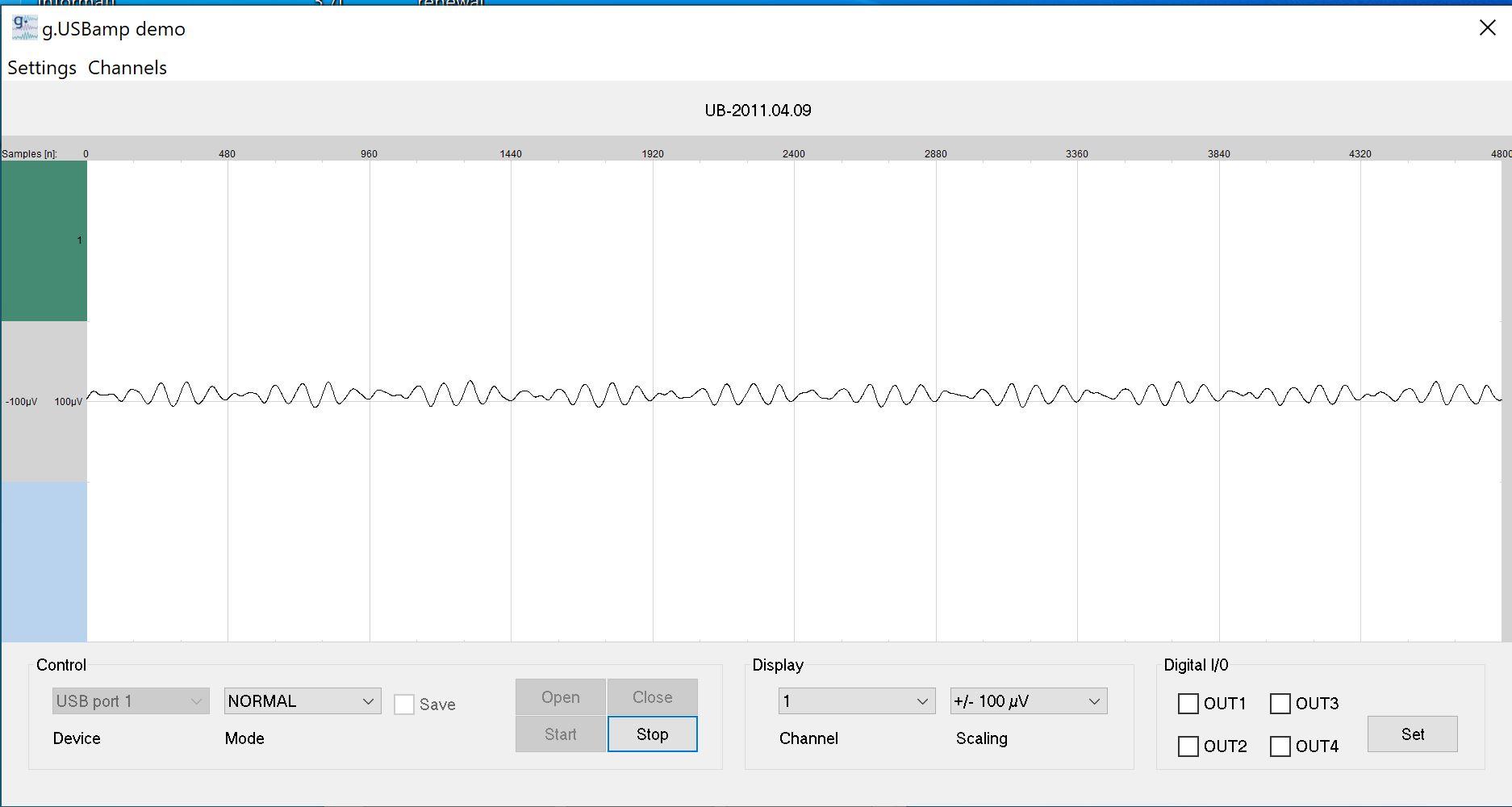
The following with 100Hz bandwidth in the USBamp app with Notch Filter on:
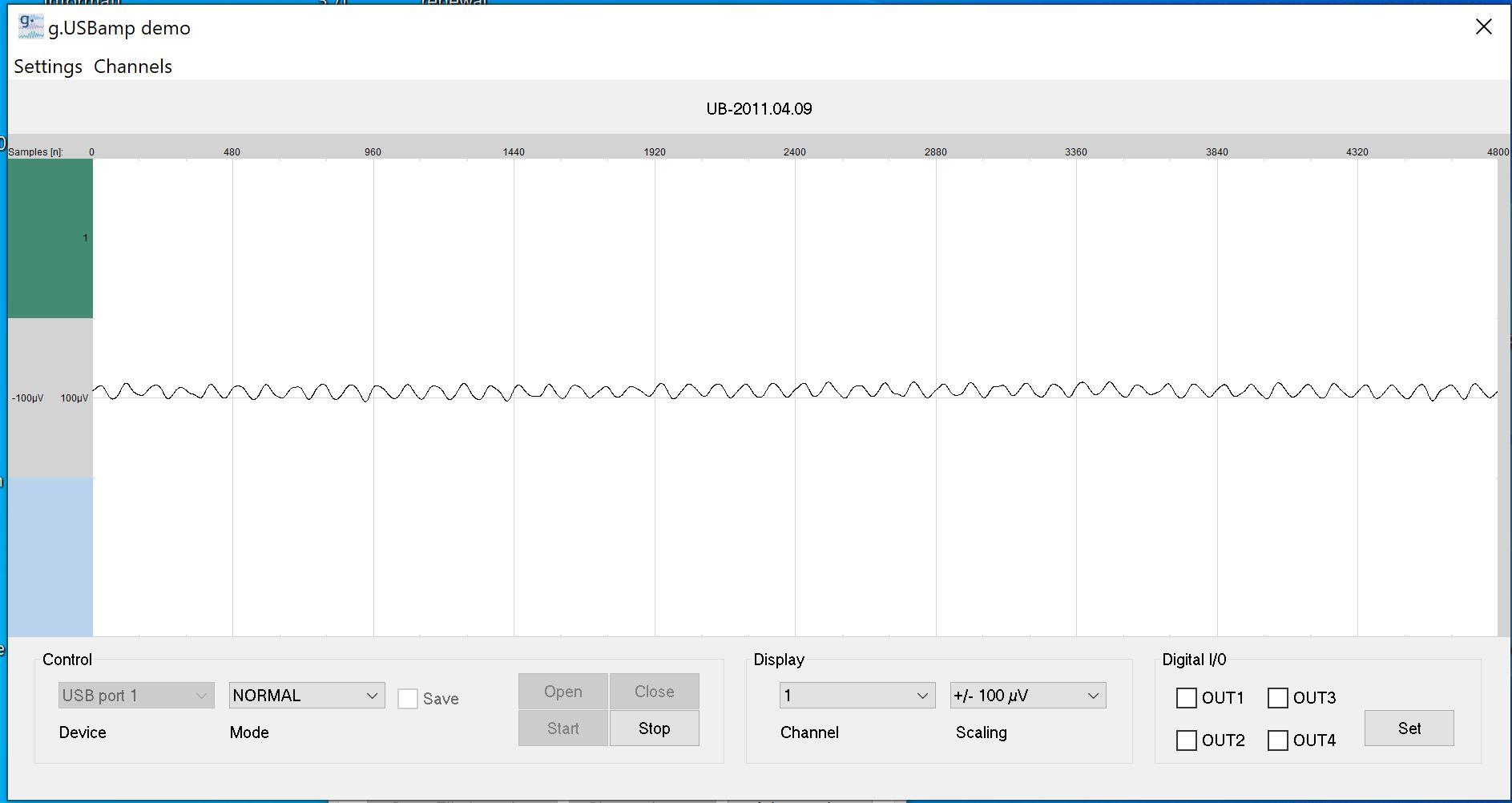
The following with 250Hz bandwidth in the USBamp app with Notch Filter off:
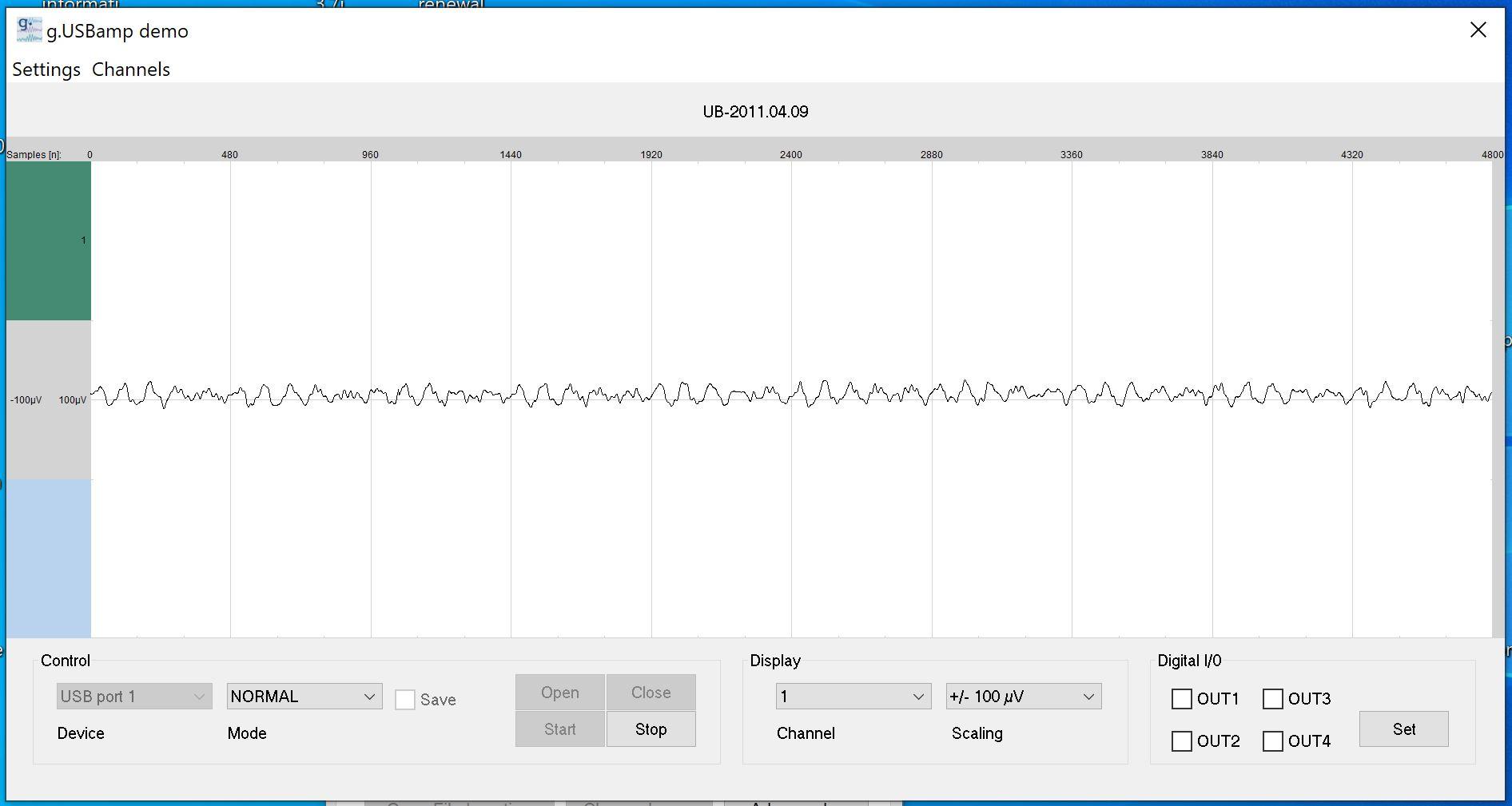
The following with 250Hz bandwidth in the USBamp app with Notch Filter on:
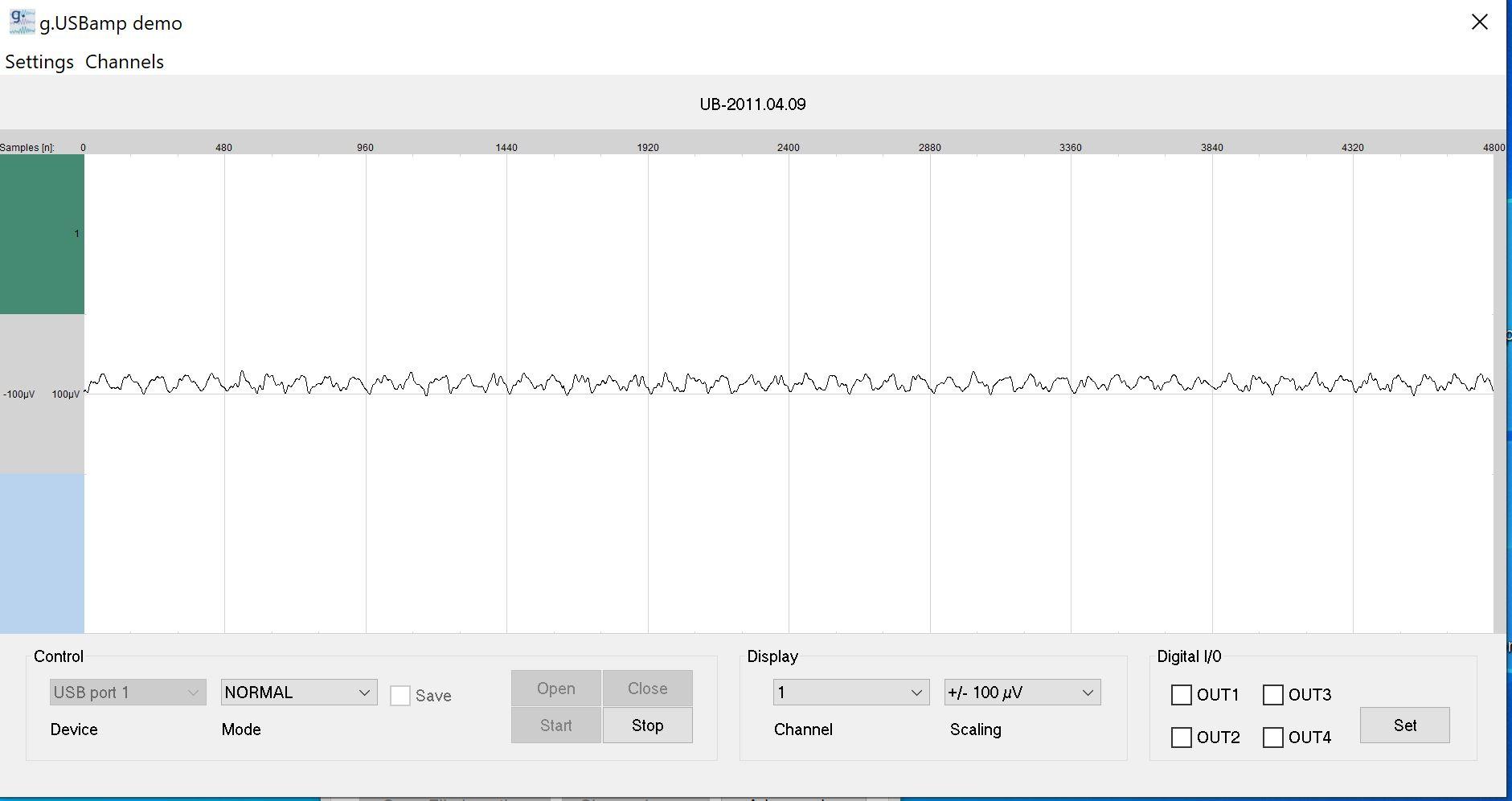
The following with 500Hz bandwidth in the USBamp app with Notch Filter off:
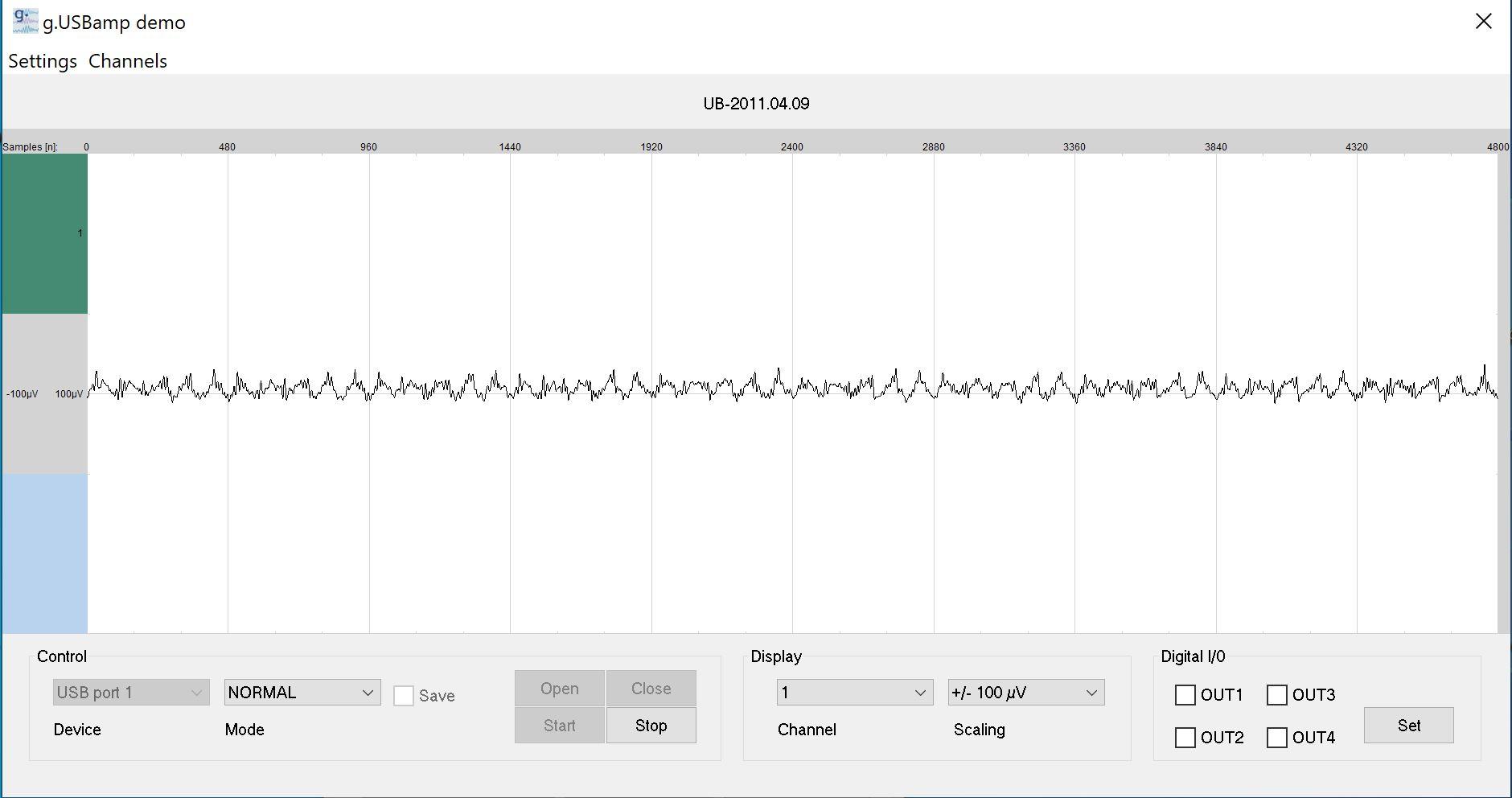
The following with 500Hz bandwidth in the USBamp app with Notch Filter on:
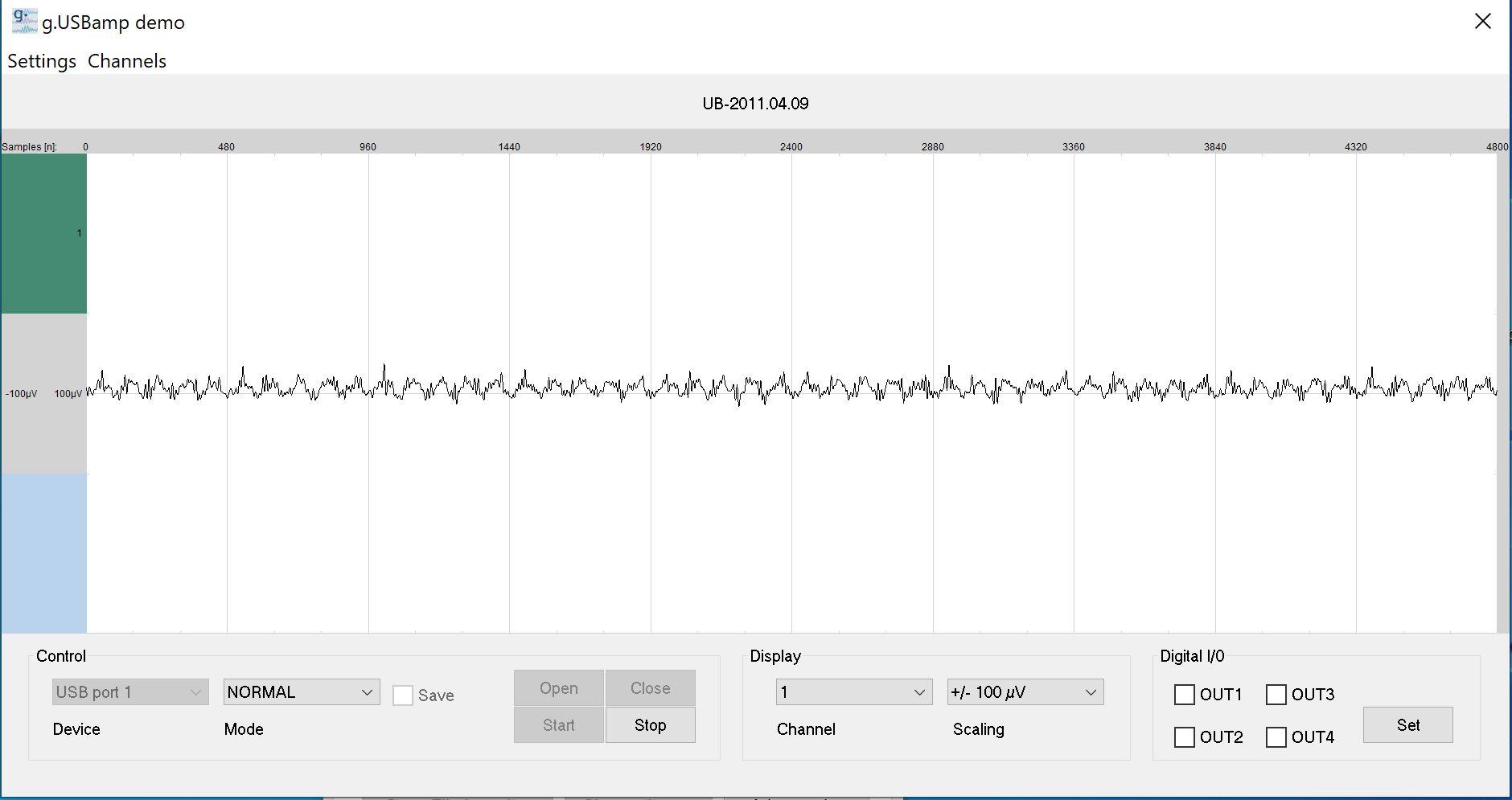
The following with 1000Hz bandwidth in the USBamp app with Notch Filter off:
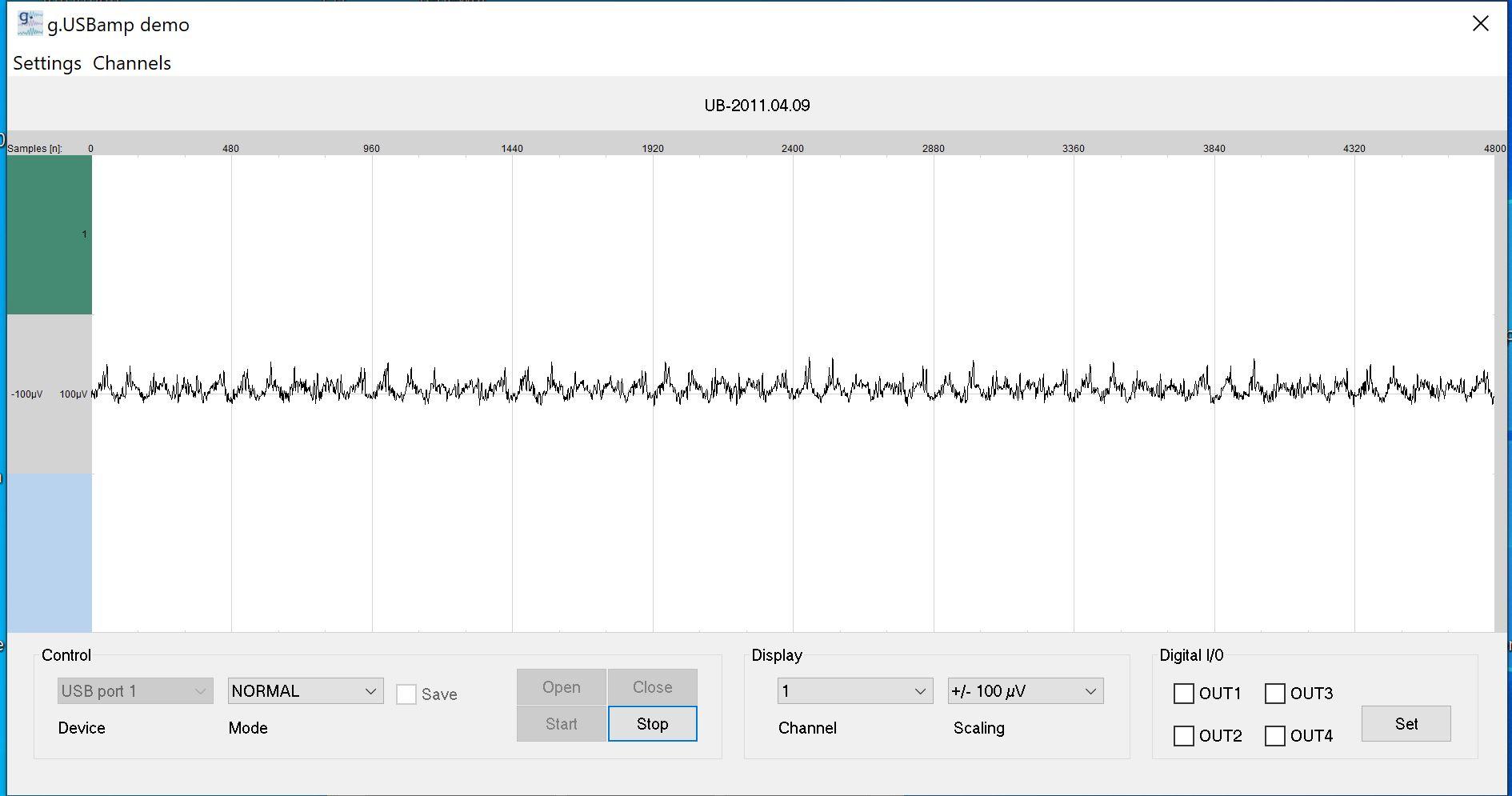
The following with 1000Hz bandwidth in the USBamp app with Notch Filter on:
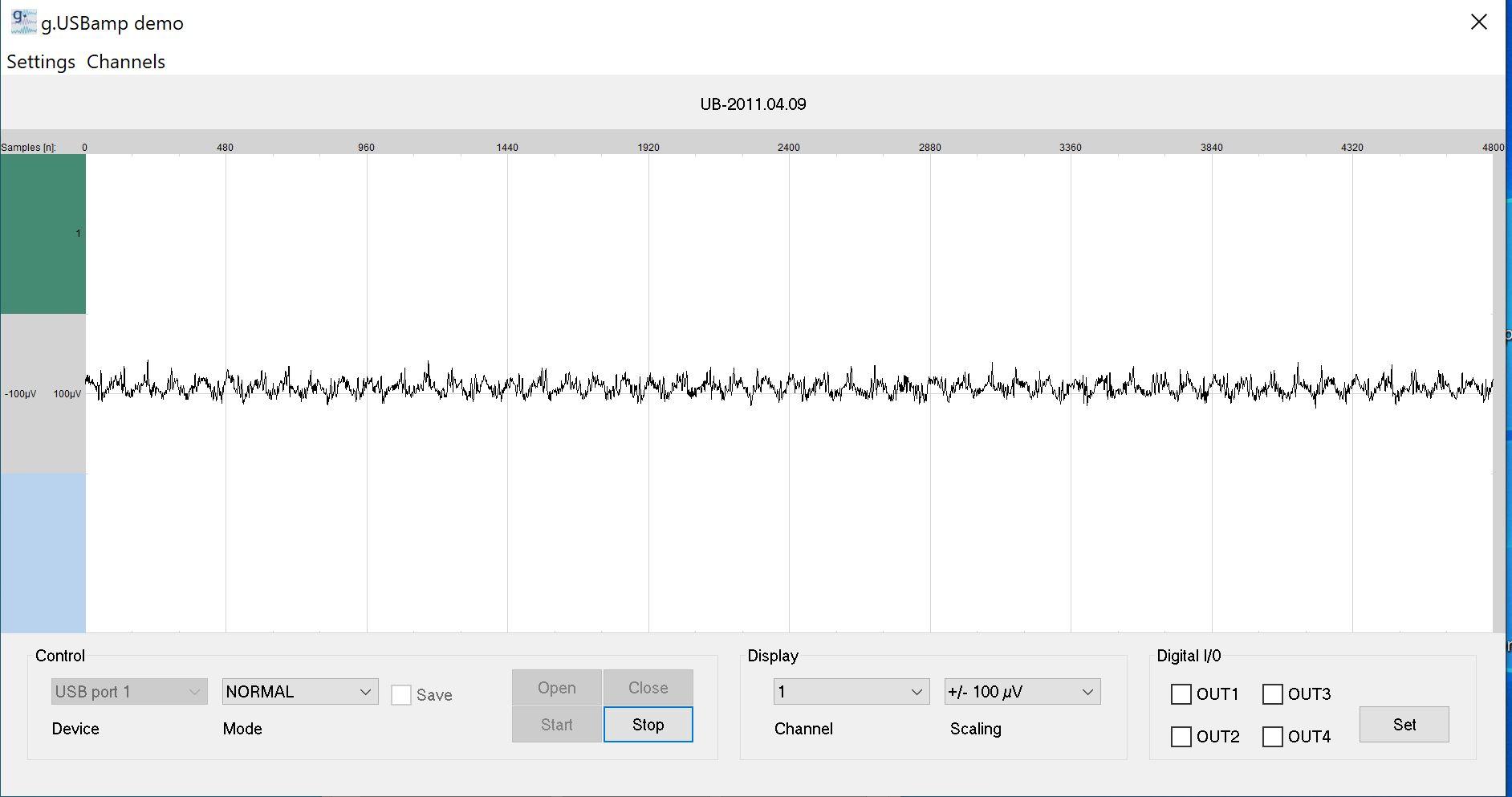
I shared all of them because I want to ask whether it is possible to use 1000Hz bandwidth in USBamp with 10uV input. The main unit may not be capable of it. No problem understanding/accepting this. But what I want to know is if you use active electrodes. Would the noise be any less at 1000Hz bandwidth? I read the gtec active electrodes have gain between 1 to 10. If 10 is chosen. And supposed the USBamp +- 250mV uses no gain. Does it mean the 10uV would become 100uV in the ADC +-250mV range? But how does it remove the noise at 10uV at 1000Hz bandwidth? I mean. I have 2 units of the BMA-200. It won't make the noise lesser than 5 nV/sqrt (Hz) for either. So for the USBamp 400uV noise at 1-30Hz. How would it improve the noise at 10uV, 1000Hz bandwidth (or lesser) if 10X gain preamplifier in the active electrodes are used? I wanted to ask this for many days so anyone reading this please share what you think. Thanks.